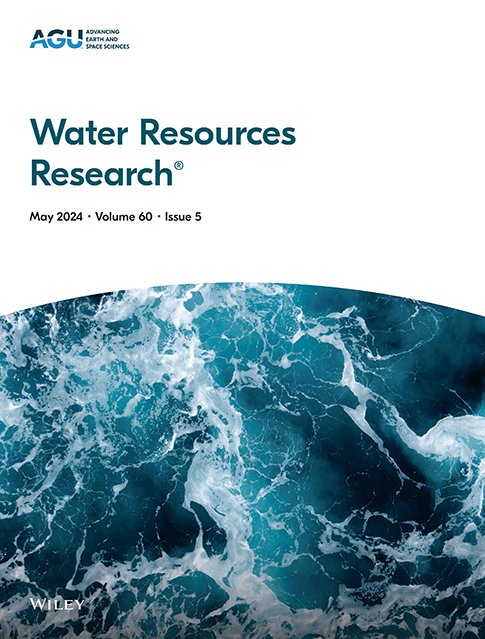Hydrologic Regime Determines Catchment-Scale Dissolved Carbon Export Patterns
IF 4.6
1区 地球科学
Q2 ENVIRONMENTAL SCIENCES
引用次数: 0
Abstract
Hydrologic regimes are affecting terrestrial carbon transformation, chemical weathering and lateral transport. However, its impacts on dissolved carbon export patterns remains elusive. In this study, we collected a 2-year high-frequency dissolved inorganic (DIC) and organic carbon (DOC) dataset, namely a wet year (Rainfall = 1,158 mm) and a dry year (Rainfall = 603 mm). The results showed that drought led to a significant decrease in dissolved carbon concentration and discharge during the monitoring period. During non-storm periods, DIC and DOC shifted from dilution and chemostatic to enrichment patterns from wet to dry years, respectively. However, the export patterns were reversed during storm periods. DIC and DOC export patterns in wet year were dominated by dilution and chemostatic, respectively, while both patterns were dominated by dilution in dry year. Structural equation models revealed that the aridity index and temperature may affect dissolved carbon export patterns. We further classified storm events into three major types and conceptualized catchment-scale transport mechanisms for dissolved carbon. Dry-AMCs events result in DIC dilution and DOC chemostatic behavior, whereas Wet-AMCs events result in DIC chemostatic and DOC enrichment behavior due to increased hydrological connectivity. The third type corresponds to extreme events, where larger overland flow often results in DIC dilution but DOC enrichment behavior. These findings reveal the predominant role of drought in altering carbon lateral export by decreasing concentrations and fluxes and modifying export patterns.水文制度决定流域尺度的溶解碳输出模式
水文制度影响着陆地碳转化、化学风化和横向运输。然而,其对溶解碳输出模式的影响仍然难以捉摸。在本研究中,我们收集了一个2年的高频溶解无机(DIC)和有机碳(DOC)数据集,即一个湿润年(降雨量= 1,158 mm)和一个干旱年(降雨量= 603 mm)。结果表明:干旱导致监测期内溶解碳浓度和排放量显著降低;在非风暴期,DIC和DOC分别从湿润年和干燥年的稀释和化学平衡模式转变为富集模式。然而,在风暴期间,出口模式发生了逆转。湿润年DIC和DOC出口模式分别以稀释型和化学静态型为主,干旱年两者都以稀释型为主。结构方程模型表明,干旱指数和温度可能影响溶解碳的输出模式。我们进一步将风暴事件划分为三种主要类型,并对流域尺度的溶解碳运输机制进行了概念化。干性amc事件导致DIC稀释和DOC的化学静态行为,而湿性amc事件由于增加了水文连通性而导致DIC化学静态和DOC富集行为。第三种类型对应于极端事件,较大的坡面流往往导致DIC稀释而DOC富集。这些发现揭示了干旱通过降低碳浓度和通量以及改变出口模式来改变碳横向出口的主要作用。
本文章由计算机程序翻译,如有差异,请以英文原文为准。
求助全文
约1分钟内获得全文
求助全文
来源期刊

Water Resources Research
环境科学-湖沼学
CiteScore
8.80
自引率
13.00%
发文量
599
审稿时长
3.5 months
期刊介绍:
Water Resources Research (WRR) is an interdisciplinary journal that focuses on hydrology and water resources. It publishes original research in the natural and social sciences of water. It emphasizes the role of water in the Earth system, including physical, chemical, biological, and ecological processes in water resources research and management, including social, policy, and public health implications. It encompasses observational, experimental, theoretical, analytical, numerical, and data-driven approaches that advance the science of water and its management. Submissions are evaluated for their novelty, accuracy, significance, and broader implications of the findings.
 求助内容:
求助内容: 应助结果提醒方式:
应助结果提醒方式:


